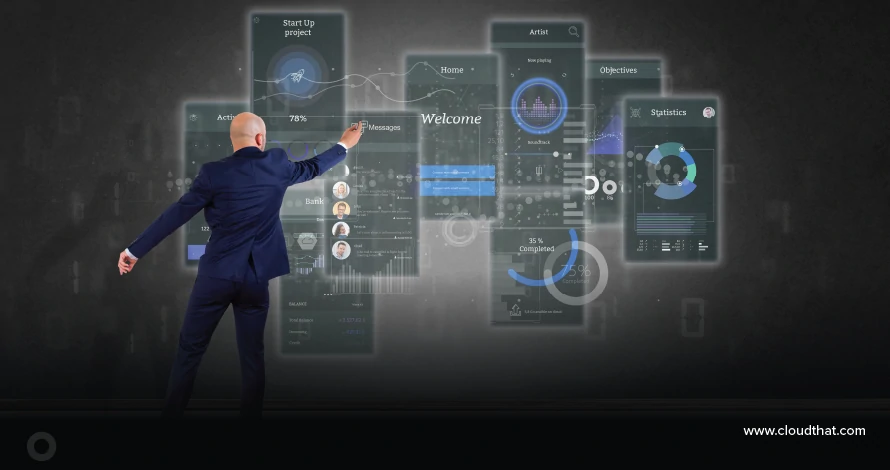|
Voiced by Amazon Polly |
Overview
In today’s digital environment, long forms can overwhelm users and lead to abandonment. Multi-step forms address this issue by breaking down lengthy forms into smaller, more manageable sections, allowing users to focus on one part at a time. This approach improves both user experience and form completion rates.
Pioneers in Cloud Consulting & Migration Services
- Reduced infrastructural costs
- Accelerated application deployment
Key Features and Benefits
- Better Interaction with Users:
By segmenting information into manageable steps, multi-step forms increase user engagement by maintaining user focus and lowering form abandonment.
2. Validation and Retrieval of Data:
Data validation can be carried out at each stage of multi-step forms, guaranteeing the information gathered is correct and comprehensive. This functionality is particularly helpful 1for intricate forms requiring thorough user input.
3. Modal Reasoning:
You can use conditional logic in Power Pages to create multi-step forms, making the form more relevant and personalized by showing or hiding specific steps or fields based on user responses.
4. Progress Statistics:
Progress or step indicators visually depict the user’s progress throughout the form. As users move from one step to the next, these indicators guide them and give a sense of accomplishment.
5. Easy Data Entry:
Breaking down the form into steps simplifies data entry, making it easier for users to complete the form accurately.
6. Improved Monitoring and Analytics:
You can learn much about where users stall out or run into problems by monitoring user interactions at every stage. This data can make the form more efficient and raise completion rates.
Creating a Multi-Step Form
- Building the Form Structure:
Your multi-step form must have its structure planned before you can begin developing it. To make the form simpler for users to complete, think about how you can logically break it into steps. For instance, you may separate your form into sections like References, Work Experience, Education, and Personal Information if you’re making a job application.
2. Designing the Power Pages Form
- Developing the Form:
First, launch the editor to build a fresh multi-step form in Power Pages. Describe the steps; each step should correspond to a distinct section.
- Field Addition and Arrangement:
To effortlessly arrange fields within the form’s layout, add them to each step by dragging and dropping them.
- Put Navigation into Execution:
To enable users to switch across steps with no losing data, include “Next” and “Previous” buttons.
- Conditional Logic in Practice:
Use conditional logic to customize the form depending on user input, displaying or concealing fields or steps as necessary.
- Tailoring the Form:
Make design changes to the form more visually appealing by changing the fonts, colors, and layouts to reflect your brand.
3. Check and Publish:
After building your multi-step form, ensure it works as intended by thoroughly testing it. Look for any problems with conditional logic, data validation, and navigation. Once the form has been tested, you can post it live for user interaction on the Power Pages website.
Practical Applications and Examples
- Registration/Sign-Up Forms:
To make it easy for users and boost conversion rates, divide the process into phases like Personal Data, Phone Details, and Account Setup.
- Surveys and Feedback:
Group questions into categories like satisfaction, usability, and suggestions to make it less intimidating for users and encourage more responses.
- Job Application Forms:
To gather all the required information, divide your application into personal details, educational institutions, and work experience categories.
- E-commerce Checkout:
To lower cart abandonment and streamline the checkout process, walk customers through the billing, shipping, and payment stages.
- Membership Sign-Ups:
To encourage more people to finish the sign-up process, employ steps to explain the conditions and benefits appropriately.
Conclusion
Power Pages multi-step forms are useful for gathering comprehensive data in an organized, approachable manner. Forms that are divided into manageable portions improve user engagement, guarantee proper data collection, and offer insightful information. Consider leveraging Power Pages’ adaptable and adjustable multi-step forms to build seamless, customized experiences to enhance the customer experience on your app or website.
Drop a query if you have any questions regarding Power Pages and we will get back to you quickly.
Empowering organizations to become ‘data driven’ enterprises with our Cloud experts.
- Reduced infrastructure costs
- Timely data-driven decisions
About CloudThat
CloudThat is an award-winning company and the first in India to offer cloud training and consulting services worldwide. As a Microsoft Solutions Partner, AWS Advanced Tier Training Partner, and Google Cloud Platform Partner, CloudThat has empowered over 850,000 professionals through 600+ cloud certifications winning global recognition for its training excellence including 20 MCT Trainers in Microsoft’s Global Top 100 and an impressive 12 awards in the last 8 years. CloudThat specializes in Cloud Migration, Data Platforms, DevOps, IoT, and cutting-edge technologies like Gen AI & AI/ML. It has delivered over 500 consulting projects for 250+ organizations in 30+ countries as it continues to empower professionals and enterprises to thrive in the digital-first world.
FAQs
1. What benefits might multi-step forms offer?
ANS: – Multiple-step forms provide various advantages, such as better data gathering, higher completion rates, and enhanced user experience. Users can complete long forms without feeling overwhelmed if divided into manageable steps.
2. Can I use my custom code in multi-step Power Pages forms?
ANS: – Yes, you may customize your multi-step forms with Power Pages by adding custom JavaScript and CSS.

WRITTEN BY Ranjani Iyer Srikrishnan
Iyer Ranjani Srikrishnan is a Power Platform Developer at CloudThat, specializing in low-code business solutions using Power Apps, Power Automate, and Power BI. She builds responsive applications, automated workflows, and insightful dashboards that drive efficiency and enable data-driven decision-making. Ranjani is also skilled in JavaScript, HTML, and Power Fx, working extensively with Dataverse, SharePoint, and SQL to deliver customized, user-friendly solutions. Passionate about creating impactful digital experiences, she actively explores emerging tools such as AI Builder, Power Virtual Agents, and Azure Logic Apps to continuously enhance her expertise in the Power Platform ecosystem.


 Login
Login


 September 13, 2024
September 13, 2024 PREV
PREV










Comments